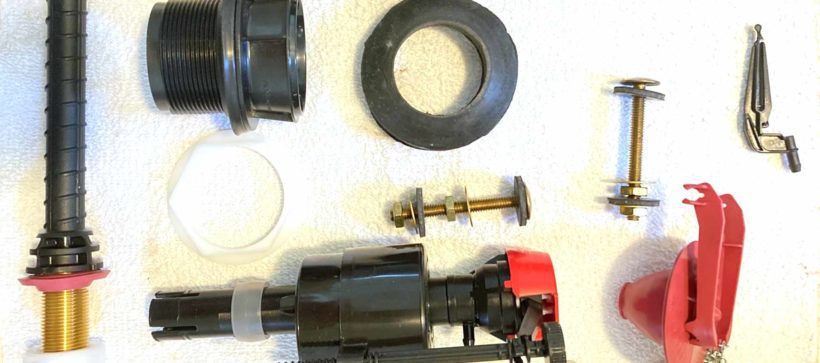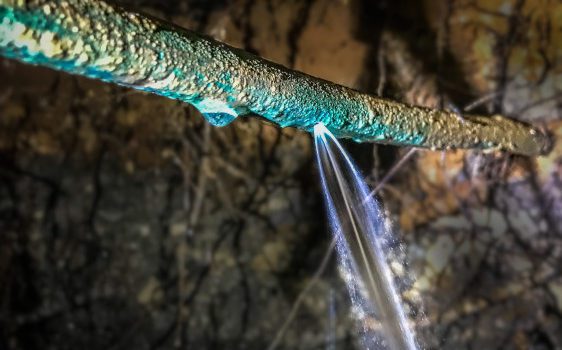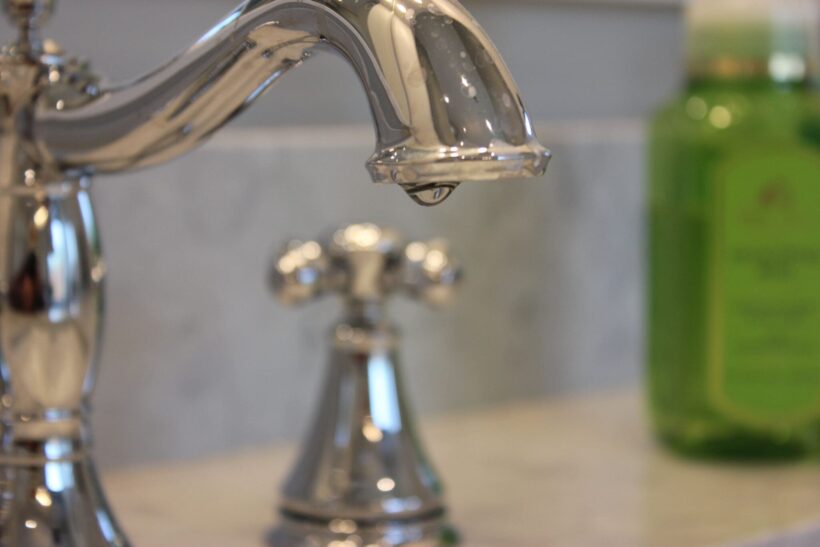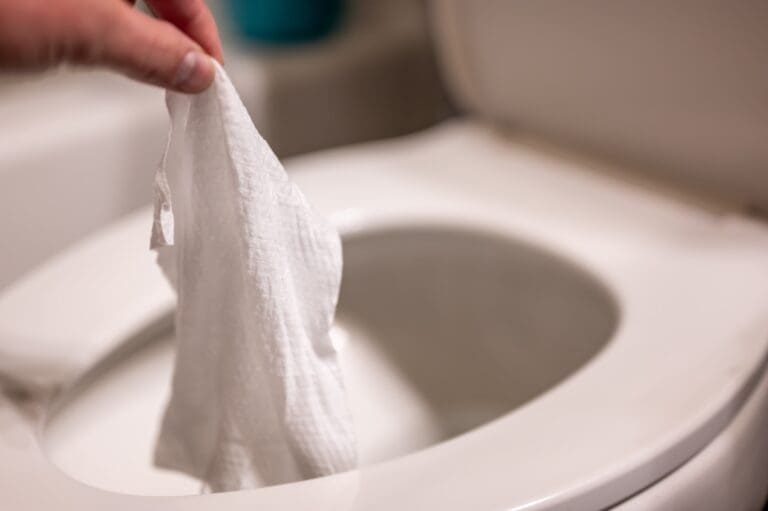Is Your Toilet Saving Water or Clogging Your Pipes?
Newer is almost always better when it comes to plumbing, but sometimes it’s more complicated than that. In this article, we’ll go into when it is and when it isn’t a good idea to replace your old toilet with a new, water saving toilet.
TLDR; If your house was built before the mid 1980s, you probably want to rebuild your old toilet and keep it installed if possible. This is because of the cast iron drain system under the house. If your house is newer than that, you may consider upgrading to a newer, water-saving toilet.
In order to understand why this is, there are a few things we need to talk about north DFW plumbing.
How Much Water Does Your Toilet Flush?

In cities just north of Dallas like Richardson, Plano, and Carrollton, there were many homes built in the 1960s, 1970s, and 1980s. At this time, there weren’t strict standards regulating how efficient toilets must be in order to be sold on the market for residential use. You would frequently find toilets which would flush 3+ gallons each time the lever was pulled.
Many may remember that a common money/water saving DIY tip was to put a brick in your toilet tank. Old tanks were large enough that even when a brick was placed in to displace water, they would still operate correctly (in theory) – they would just use less water.
It wasn’t until the Energy Policy Act was passed by Congress in 1992 that things fundamentally changed. Among many other things, this legislation mandated that all sales of toilets which flush with more than 1.6 gallons would be phased out by 1994. After 1994, all toilets sold in the United States for use in residential settings had to conform to this standard 1.6 gpf (gallons per flush) requirement.
This was the state of things in Texas over the next 20 years. It is interesting to note for those of us that live in the North DFW area, this period of time coincides with a massive residential construction boom. In both Collin and Denton counties, almost 60% of current homes were built between 1990 and 2010.
That means if you’re living in a city like Friso, Allen, McKinney, or Lewisville, it is very likely that you have a 1.6 gpf toilet unless it has been replaced already.

Things changed again in 2009, however. This time, the change wasn’t on the national level; it was a change to Texas State Law. Texas House Bill 2667 was signed into law. This law made Texas the second state after California to require high efficiency toilets or toilets that conform to the EPA’s Watersense standard. By 2014, all sales of toilets which flush with more than 1.28 gallons had to be completely phased out.
So if your home was built in the last 8-12 years, there is a decent chance you have all high-efficiency toilets in your home. In cities with significant new growth like Prosper and Melissa, this likelihood just gets higher.
The Pros and Cons of Water Saving Toilets
For the most part, the transition to efficient toilets has had its intended effects. Water saving toilets and other low-flow fixtures have resulted in water usage per person steadily decreasing over the last 30 years. This certainly eases the infrastructure demands on the rapidly expanding North Texas area. On an individual level, it also saves money in utilities for the average homeowner.
Like most things, though, there were unintended consequences. In our experience as residential service plumbers, many of the toilets that were installed shortly after a legislative change had significant design shortcomings. Manufacturers may have found a way to meet the new requirements, but flushing power was less than impressive and many toilets would clog way too easily.
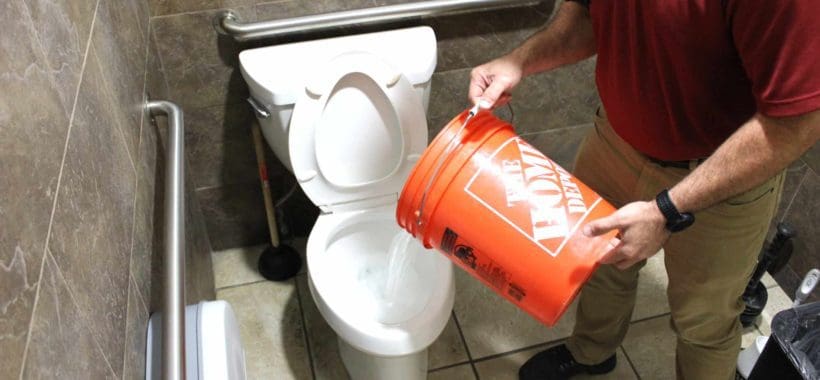
While toilets may seem simple on the outside, there are so many engineering details that go into the design of a powerfully-flushing, quiet, efficient, and clean toilet. There are many different types of toilets, and independent testing procedures such as the MaP protocol can be very rigorous.
After technology and manufacturing caught up, the well-designed toilets on the market are capable of easily flushing over 1,000 grams of waste with just 1.28 gallons of water.
Unfortunately, so many of the new homes built in DFW over the last 30 years used some of the cheapest bulk toilets available that were allowed. When it comes to toilets, “builder grade” has consequences that are more than just aesthetic. It may mean living with frequent plunging or constant threat of backup.
Poor toilet design isn’t the only unintended consequence of water saving, low-flow toilets either. There is another consequence lurking under many homes that didn’t even cross people’s minds – an aging cast iron piping system.
How Do WaterSense Toilets Affect the Drain Pipes?
Before the mid-1980s, all of the drain pipes under the home were made of cast iron. These cast iron sewer lines slowly rust away over time due to corrosion of the water and chemicals put down the drain. Eventually, they will all have to be replaced.
But even the ones that are still in serviceable condition are often covered on the inside with a rusty, rough buildup. This greatly increases the chances of clogs, as you can imagine. Fortunately, the toilets that these homes were built with didn’t have restrictions on water usage. The old 3-gallon toilets put a lot of water down the drain with each flush. This helps the solid waste to clear all of the rough cast iron surfaces and make it out to the city sewer system.
Over time, though, these toilets break or fall into disrepair. Gradually, many of the old 3-gallon toilets are being changed out with new 1.28 gpf toilets. While these toilets may be superior in every way and may even have a more powerful flush, they are putting less than half of the water down into the pipes to carry the waste. The flush clears the toilet, but the waste gets stuck halfway down the pipe and causes a clog.
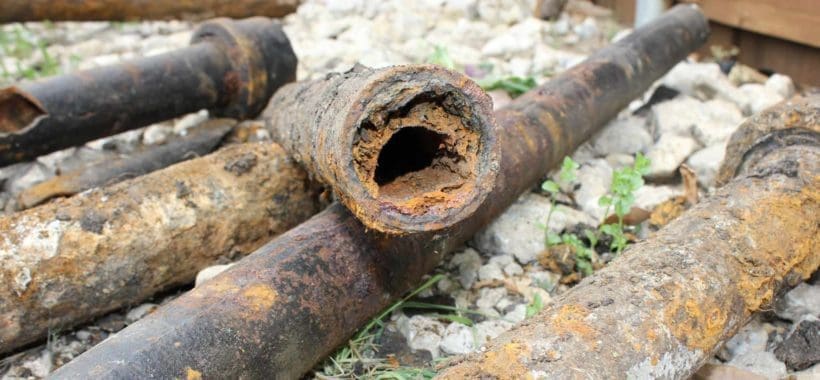
It is for this reason that we recommend people rebuild their old toilets instead of replacing them if they have cast iron piping under the slab. If the cast iron piping has already been replaced or if the house was built after the mid-1980s, then PVC (plastic) is what the newer pipes will be made out of.
Unlike cast iron, PVC doesn’t rust or corrode. While buildup of grease and waste can still occur, this mostly happens on the pipes that connect to the kitchen sink. As long as the pipes were installed correctly and there haven’t been any breaks caused by foundation movement, Watersense toilets usually have no problems with carrying waste down through a PVC system.
How To Prevent Toilet Clogs On Cast Iron Plumbing Systems
What if your old toilet must be replaced for some reason (like the porcelain cracking, etc…)? Are you just going to be stuck with frequent clogs?
Here are a few tips that may help:
Swap Toilet Locations
If you know how your waste/drain piping is laid out, it will help a lot if you plan the location of the water saving toilet so that it is as close as possible to where the drain pipe exits out from under the house. Here’s an example of how that may work:
Let’s say that the broken toilet is located in the master bathroom at the back of the house, but the sewer line exits the front of the house. Instead of installing the Watersense toilet at the back of the house, take a working 3 gpf toilet from the front guest bathroom and put IT in the master bathroom. Then, install the new toilet in the front guest bathroom. In this arrangement, the new low-flow toilet won’t have as far to push the waste.
Flush More Than Once
If you did your research and bought a high quality, efficient toilet, then you will probably only have to flush once to clear the bowl. However, if that water-saving toilet is installed on cast iron piping, it is always a good idea to flush 2 or 3 times when putting solids down the drain.
The extra water may seem like a waste, but it will help move the toilet paper and waste down the rough cast iron piping far enough to get to the city sewer system.
Related to this, it is also a good idea to hold the lever handle of the toilet down longer. When you do this, it will allow all of the water to travel from the tank to the bowl.
Use Septic Safe Toilet Paper

Not all toilet paper is created equal when it comes to your home’s drain piping. You may have heard the term “septic safe” referring to toilet paper. While most homes in the suburbs of DFW don’t use private septic systems, it still may be a good idea to use septic safe tissue – especially when you have a 1.28 gpf toilet on a cast iron system.
Septic safe toilet paper was designed to break down and disintegrate very quickly when it comes into contact with water. This is crucial to prevent clogs. All of the rough edges and surfaces inside the cast iron pipe can easily snag more robust toilet paper and allow it to remain in the pipe. Since it doesn’t break down quickly, it will stay there long enough to catch subsequent wads of toilet paper that come down the drain – until you have a full clog.
Descale Your Cast Iron Pipes
If the cast iron lines underneath your home are beginning to fall apart, it is probably time to plan on full or partial replacement of your drain pipes. However, if the cast iron is still serviceable, it may be worthwhile to have them thoroughly scoured to remove as much buildup and rough parts as possible.
Most of the time, this cannot be done with a simple drain snake or sewer machine, but there are special machines called hydro jetters and flex shaft machines which are designed just for this purpose.
By cleaning out the corrosion buildup and restoring some level of smoothness to your old cast iron piping, you’ll greatly decrease the chance of frequent clogs, especially when the other tips are followed as well.
What’s Next?
The history and technology behind toilets is quite fascinating. Hopefully, the information in this article equips you to make smart decisions about repair, replacement, and use of the toilets in your home.
If you have more questions about your toilets or the drain piping under your slab, please reach out to us at (972) 801-9798. Every plumber at Legacy Plumbing is a licensed professional at the top of their craft. We are not only prepared to resolve your plumbing issue quickly and efficiently, but we are excited to equip YOU with all of the information you need to make smart home improvement decisions.
